
Peru offers a wide variety of microclimates. According to research by Nikolai Vavilov, a Russian botanist and geneticist, Peru is one of the world’s top 10 centers of diversity. With the Andes mountain range, the desert coast and part of the jungle, Peru has 80% of the world’s microclimates.
This climatic diversity reveals a high degree of genetic variation for each species. As a result, living organisms have been able to evolve over many generations to diversify and acquire various types of resistance in order to adapt to each microclimate. The cacao plant, a botanical species that came into existence around 10 million years ago, has demonstrated a great capacity to adapt thanks to its complex genetic structure.
Peru therefore shows the most diversity in terms of genetic cacao varieties. 70% of the different cacao varieties existing in the world are available in Peru. It is mainly produced by small-scale farmers who have an average of less than 3 hectares and produce an average of 0.75 metric tons per hectare. This can, however, also reach up to 3 metric tons per hectare.
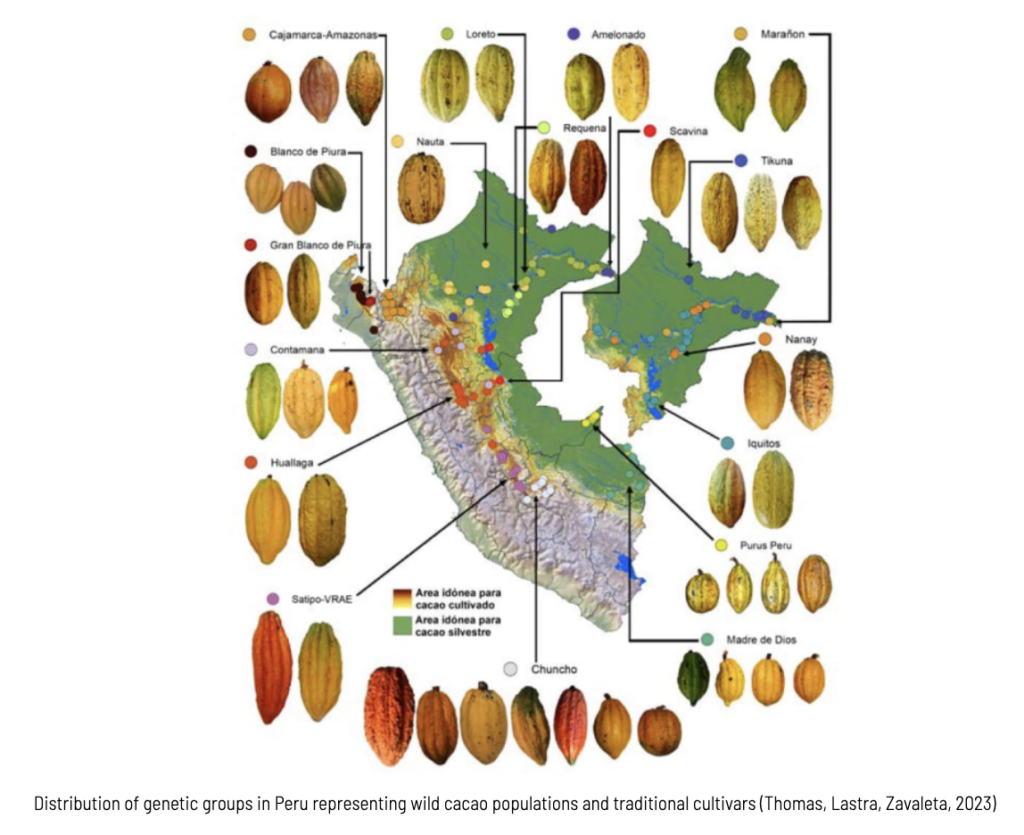
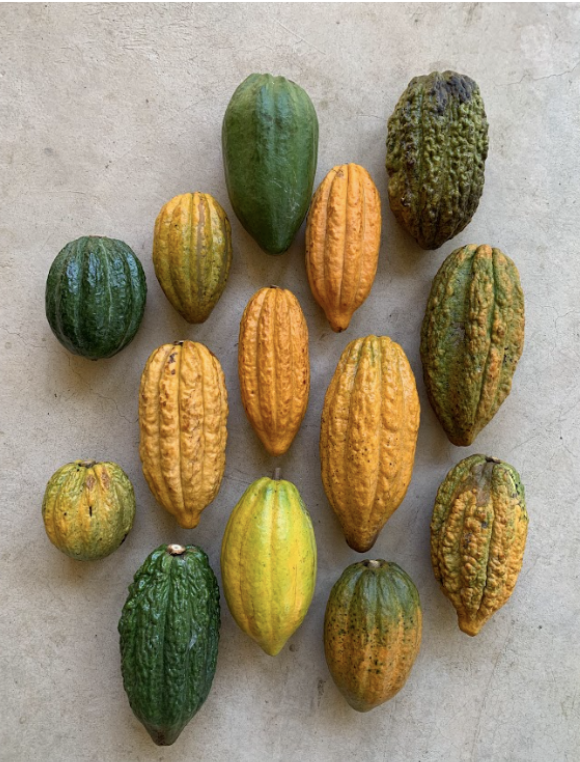
Chuncho cacao, grown in Peru’s Sacred Valley near Cusco and Machu Picchu, is famous for the richness and complexity of its flavors and aromas. It is generally characterized by a sweet, fruity and floral pulp, accompanied by a slight bitterness. As of 2023, researchers have identified it as a distinct genetic group and found ten different types of Chuncho cacao. The diverse genetic variation encompasses the genes of all other varieties of cacao, making researchers believe it could be the ‘mother’ of all fine cacao.
The unique distinction of Chuncho cacao is undoubtedly the result of a long process of domestication carried out by indigenous groups, today represented as the Machiguenga. During the Inca Empire and the colonial era, the Machiguenga consumed the pulp of the fruit, but also used the pods as currency. In addition to the cultural imprint of civilisations, the soil in which Chuncho cacao is grown also gives this product its exceptional quality.
In 2014, Justine Chesnoy, one of the founders of Cacao Latitudes, visited the Quillabamba valley. The producers were upset that their native Chuncho cacao was being sold at the same price as the CCN-51 hybrid. Believing that their beans had no future, they were ready to chop down their trees. CCN-15 was introduced as an alternative crop due to its high yields, and is widely used in areas that once grew coca. This hybrid may eventually wipe out ancestral varieties and threaten the land’s biodiversity. This is the reason why Cacao Latitudes, together with Alto Urubamba Valley and ECOM Peru, worked so hard to preserve this unique native cacao.
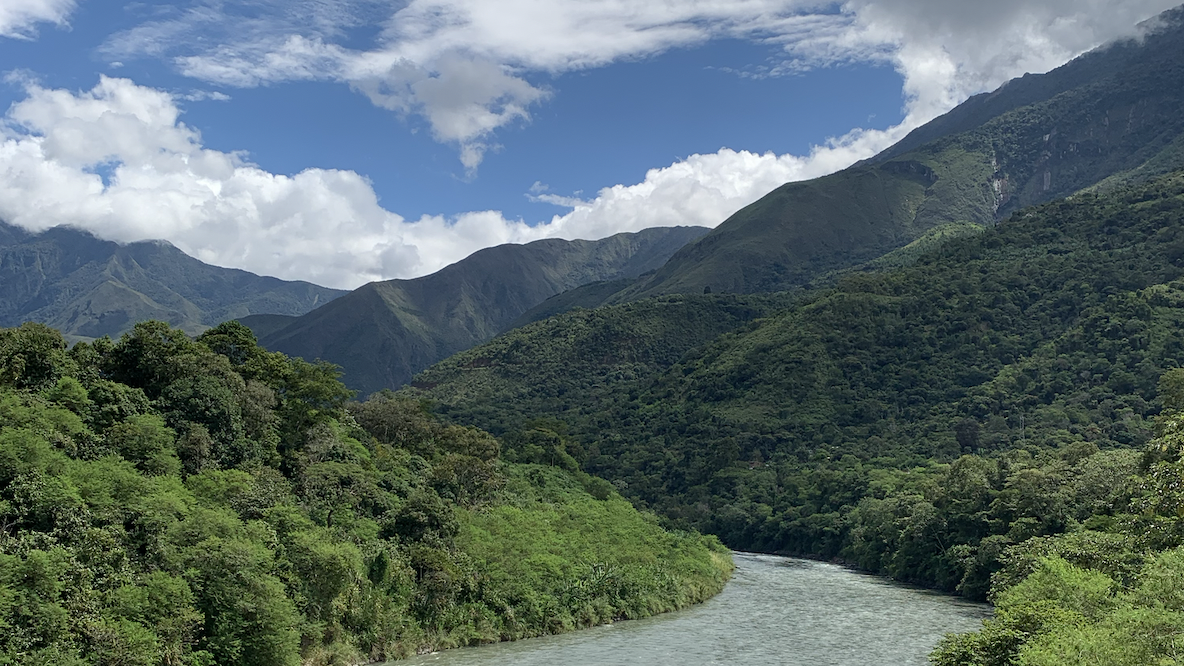
The idea was to create an organic-certified native cacao value chain using ECOM’s existing coffee infrastructures. Namely, in this region, the cacao harvest is from December to April, which is dead time on coffee farms. Our second partner, Original Beans, was interested in the preservation of indigenous beans, and agreed to buy Chuncho cacao beans from Cacao Latitudes to craft a 100% Chuncho chocolate bar.
Eight years later, Cacao Latitudes is thrilled to report that together with the other partners we have created a niche market for Chuncho beans. This cacao, grown using agroforestry practices, is not only an important source of income for farmers, but also a strong source of regional pride. Its quality is so high that competition among buyers is increasing.
The term “terroir,” derived from the word “earth,” first appeared in the 12th century. It refers to a natural region where agricultural products are cultivated. A combination of factors contributes to creating unique organoleptic characteristics in the final product.
Chuncho plantations are grown at 700 to 1200 meters. Unlike other cacao varieties, Chuncho cacao is undeniably resistant to the cold. According to studies on the genetics of Chuncho cacao, its beans contain a higher percentage of fat compared to other bean varieties. This is the result of a long process of adaptation. A long time ago, the Urubamba valley was located in a much more tropical humid climate. As each microclimate has evolved, this geographical area has become less and less tropical. Chuncho cacao has been able to adapt to this new climate, which continues to become colder and colder. The fat cells in the bean have multiplied to protect the microorganisms inside. This makes them an excellent choice for coating chocolate due to exceptional melt and creaminess.
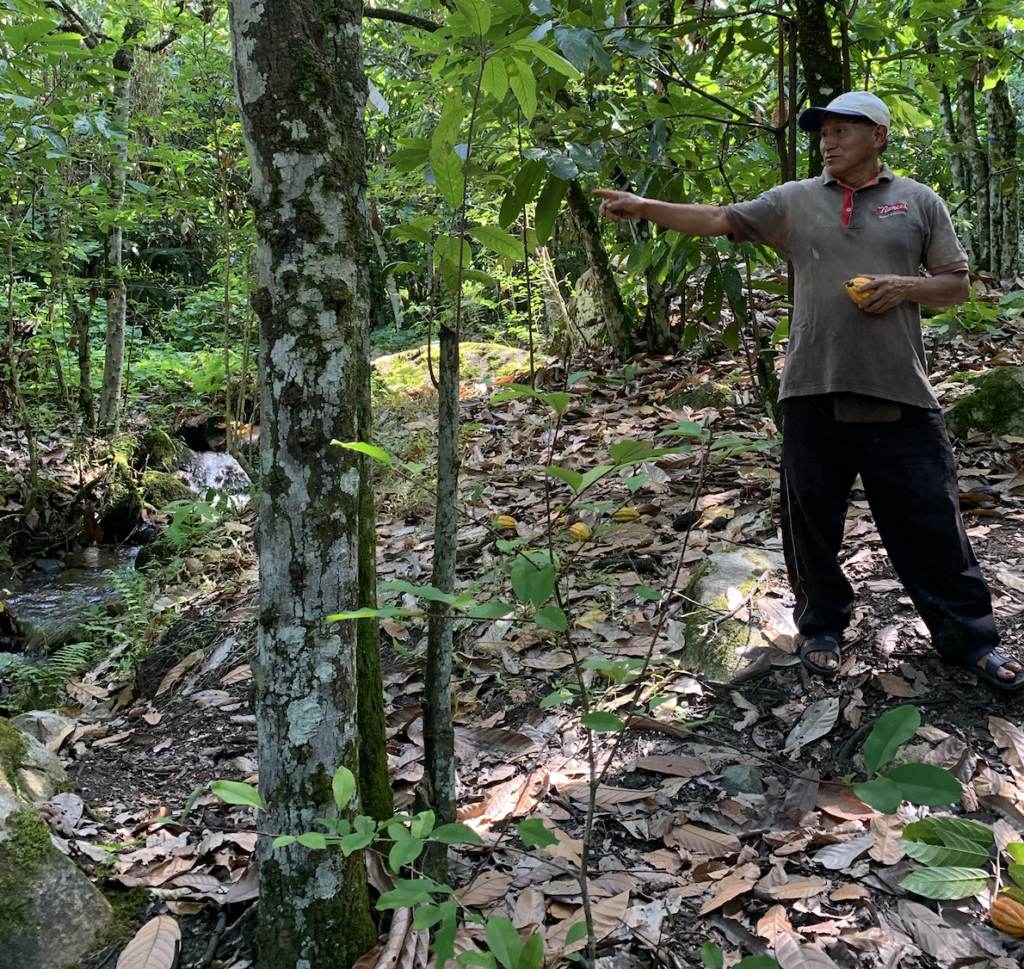
Growing at altitude also means that the cacao receives more direct sunlight. At the bottom of the valley, plants get less sun and water evaporation is higher. Chuncho cacao, on the other hand, benefits from a greater density of sunlight due to being grown at altitude and therefore has a higher sugar content.
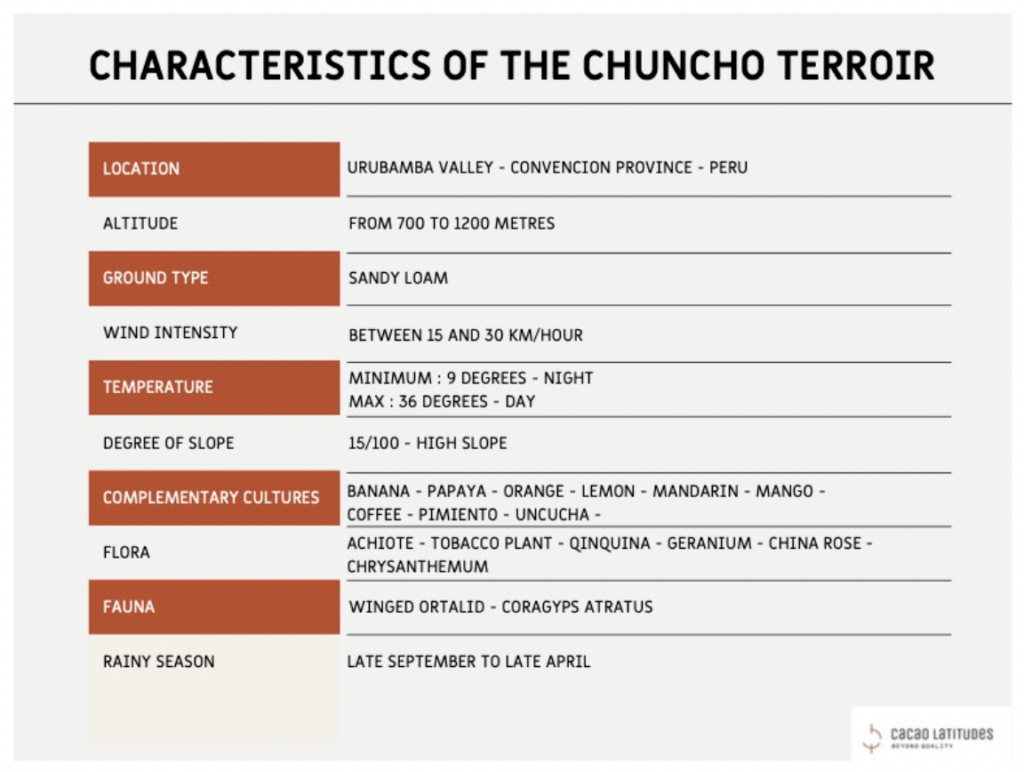
An essential factor in the terroir is the soil. Each soil has its own characteristics, determined by its origin. Soil is made up of different materials: pebbles, gravels, sand, silt, clay, humus and limestone. The soil found on farms where Chuncho cacao is grown is sandy loam. This type of soil is considered the most productive because of its proportion of humus, which is decomposed organic matter.
Soil texture also provides useful information for water and fertilization management. For example, light, sandy soils are highly permeable and retain little water. Heavy clay soils, on the other hand, can retain more water but are more compact. This limits the space available for air that the plant roots need to survive. Silt has the best characteristics of both types of soil: it retains both water and air adequately.
However, Chuncho cacao is mainly grown in the mountains with steep land slopes. As a result, the water slides off and runs off quickly into the valley. As the soil in the Urubamba valley does not have a very high clay content, it can have difficulty retaining water. So nutrients for Chuncho cacao are easily washed away. To help the cacao trees grow properly, cacao growers cultivate them with other complementary trees and plants. Namely, some plants or trees retain water, whereas others absorb nitrogen or create shade so that the soil is not damaged by the radiation.
For generations, Chuncho cacao farmers have acquired an empirical understanding of the need to grow cacao with other complementary plants. In Peru, agroforestry is not a scientific agricultural method, but rather an ancestral tradition rooted in religion. For centuries, Peruvian civilisations have been developing diversified gardens, in the knowledge that association provides a mutual supply of nutrients.
Below, the picture shows the Chuncho cacao pod alongside the complementary plants that cacao farmers grow, such as coffee, black maize, orange, achiote, noni, pacay and chirimoya.

The post-harvest phase is of high importance, as it allows the beans to fully express themselves, guaranteeing quality at a later stage. Cacao fermentation is a process that involves several stages. Yeasts produce alcohol, while aseptic and lactic bacteria take over. These bacteria are an integral part of the terroir and contribute to the final flavor of the cacao.
To guarantee consistent quality, a standardized fermentation protocol is used. The fresh cacao is weighed, drained and placed in a first box for a 36 to 48 hour fermentation without oxygen. The yeast produces alcohol from the sugar in the cacao pulp, which naturally raises the temperature.
Bacterial fermentation starts when the cacao is turned over for the first time. The bacteria produces heat and the alcohol is transformed into aseptic acid. The temperature rises again, reaching between 40 and 52 degrees Celsius. The acetic acid penetrates the interior of the cacao bean, breaking down the proteins, fatty acids and phenolic compounds. This causes the color of the cacao to change from purple to a more or less chocolate brown.
Fermentation is monitored by checking the temperature and color of the beans. A section of 10 cacao beans are taken when the third vat is turned over to assess the progress of the aseptic acid and the reduction process, which is reflected in the color of the beans.
In the specific case of Chuncho cacao, the cacao beans are turned over 3 times, for a total of 5 days of fermentation. It is important that 7 out of 10 beans are properly fermented. The aim is to preserve the floral notes while bringing out the nutty aromas that are present in well-fermented Chuncho beans. This is the reason the cacao beans are not completely fermented, so the fine floral notes remain present.
On the right is a picture of Señor Alfredo who is responsible for monitoring the fermentation of the Chuncho beans at the Alto Urubamba cooperative.

The Alto Urubamba cooperative and ECOM Peru pay the farmer 3000 USD/MT, and Cacao Latitudes pays on top a premium of 650 USD/MT to support activities, such as:
The farmers’ careful post-harvest processing allows for a very balanced expression of flavor, with woody cognac sweetness, strong cinnamon notes, and sweet fruity wine and toffee flavors. The perfume of vanilla and freshly brewed green tea adds to the flavor experience, making it feel like sipping on a hot cacao beverage with the Incas.
The results of these efforts have not gone unnoticed by chocolate makers. Many of them have expressed interest in Chuncho cacao due to its incredibly complex flavor profile, story and rarity.
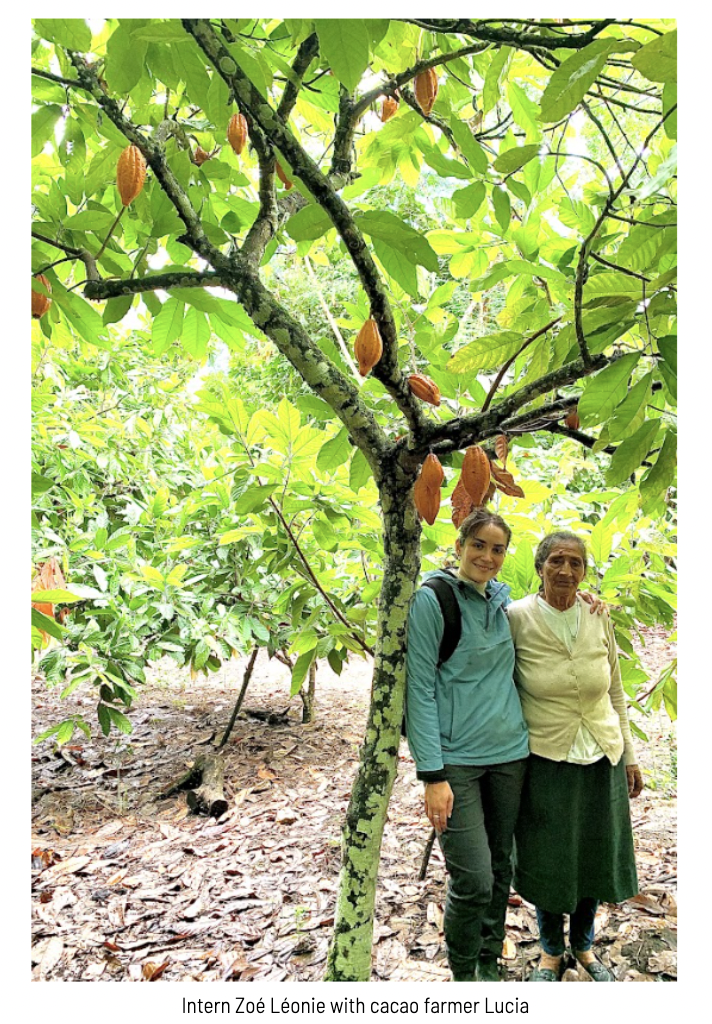
Copyright © 2024 Cacao Latitudes | Conditions of Use | Cookie Policy